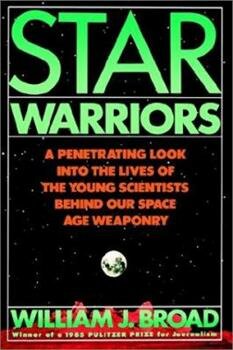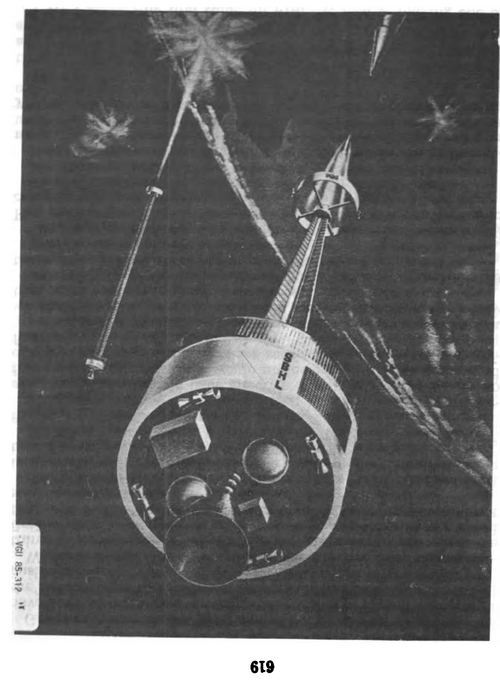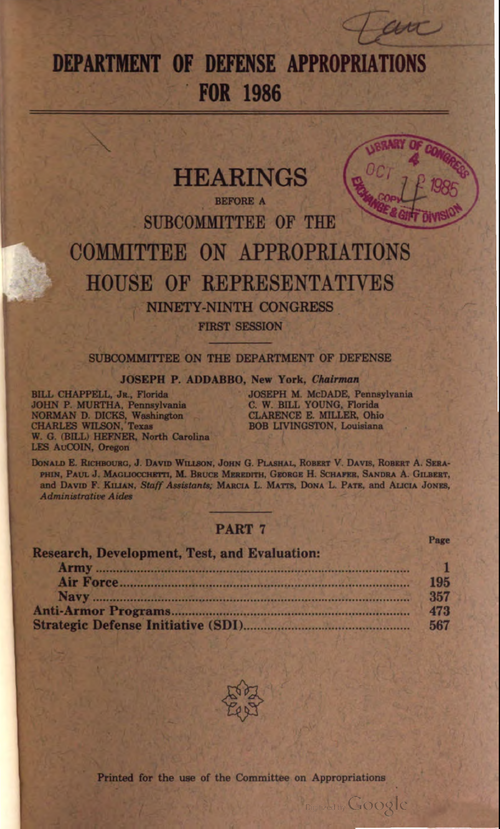This forum has discussed a lot of information on the strategic defense weapons being developed by the U.S. during the SDI era, but little has been said about what the Soviets were working on during that era.
I came across two web pages with information from sanitized and declassified documents about the CIA/American Institute of Aeronautics and Astronautics Conference on Soviet Threat Technology, Tuesday, 8 April 1986 at the CIA Headquarters Auditorium 1:

www.cia.gov
and
https://www.cia.gov/readingroom/docs/CIA-RDP88G01117R001004020002-2.pdf
The first link has run together text and the second link is a PDF with the same information, but as an image rather than as searchable text.
Here is an excerpt about Soviet developments in Directed Energy Weapons:
"VI. Directed-Energy and Hypervelocity Kinetic-Energy Weapons
Directed-energy and kinetic-energy weapons potentially could be developed for several strategic weapons applications--antisatellite (ASAT), air defense, battlefield use, and, in the longer term, ballistic missile defense (BMD).
There is strong evidence of Soviet efforts to develop high-energy laser weapons, and these efforts have been taking place, in some cases, since the 1960s:
--We estimate a laser weapon program of the magnitude of the Soviet effort would cost roughly $1 billion per year if carried out in the United States.
--Two facilities at the Saryshagan test range are assessed to have high-energy lasers with the potential to function as ASAT weapons.
--We are concerned about a large Soviet program to develop ground-based laser weapons for terminal defense against reentry vehicles. There are major uncertainties, however, concerning the feasibility and practicality of using ground-based lasers for BMD. We expect the Soviets to test the feasibility of such a system during the 1980s, probably using one of the high-energy laser facilities at Saryshagan. An operational system could not be deployed until many years later, probably not until after the year 2000.
--The Soviets appear to be developing two high-energy laser weapons with potential strategic air defense applications--ground-based and naval point defense.
--The Soviets are continuing to develop an airborne laser.
--Soviet research includes a project to develop high-energy laser weapons for use in space. A prototype high-energy, space-based laser ASAT weapon could be tested in low orbit in the early 1990s. Even if testing were successful, such a system probably could not be operational before the mid-1990s.
The Soviets are also conducting research under military sponsorship for the purpose of acquiring the ability to develop particle beam weapons (PBWs). We believe the Soviets will eventually attempt to build a space-based PBW, but the technical requirements are so severe that we estimate there is a low probability they will test a prototype before the year 2000.
The Soviets are strong in the technologies appropriate for radiofrequency (RF) weapons, which could be used to interfere with or destroy components of missiles or satellites, and we judge they are probably capable of developing a prototype RF weapon system.
We are concerned that Soviet directed-energy programs may have proceeded to the point where they could construct operational ground-based ASAT weapons."








